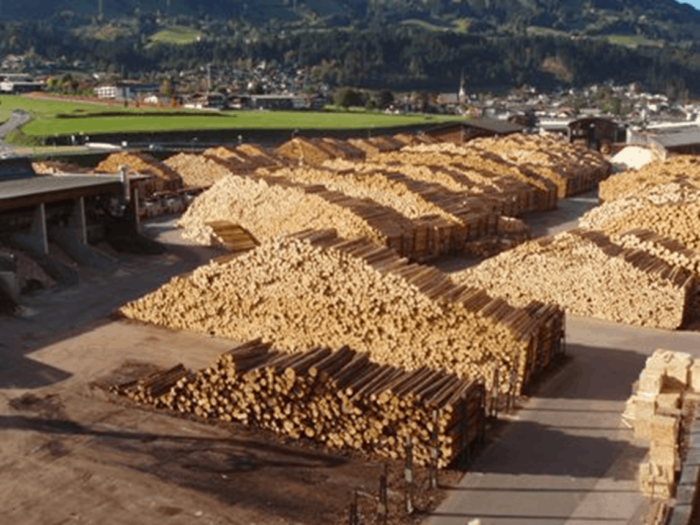In this article, we will explore the many benefits of producing energy by using biomass as a source – leveraging Biomass Heating Plants or Pellet Production Plants to do so. Global challanges like scarcity of fossil fuels and the climate change ask for alternative solutions for energy production.
The biggest advantage of bioenergy is sustainability.
Bioenergy is the meaning for all energy which is produced from the sun through a biological process. This means, the energy stored in all plants is produced through a photosynthetic process and the energy in those plants is like solar but already stored in a solid form.
To name it renewable energy we need to accept, that all plants and all plankton is a living Organism that will die after its living time and all energy will recuperated from its environment to be the basis for the next generation; or will be used by the next step in our global food chain.
CO2- neutral – A big advantage

To name the biomass energy CO2 (carbon dioxide) neutral energy we need to understand, that during the growing and photosynthetic process CO2 is divided into oxygen and carbon using the energy from the sun to do so. The carbon part will be stored in the plant or even in plankton as sugar and converted to different carbohydrates in different uses. The 02 (Oxygen) is released to the atmosphere. The renewable energy process starts with the CO2 capture from the atmosphere and will end when the plant or the plankton will die or used in an oxygen process for respiration. If plants or plankton will be food for a living organism like human, animal or bacteria and fungus, who lives from the plant carbon structure, they all will use the same amount of oxygen released by the plant during building this carbon structure and the CO2 and O2 circle is complete.
All food chain steps start with eating plants or plankton for living to get energy for living out of the carbon storage from the sun. In our technical process of using those advantages of biomass energy we will create the same result. We will burn the carbon storage and we will use the same amount of oxygen released by the plant during living to get the energy from the solid or liquid biomass and we use those energy to heat our technical process.
The kind of process we will use to get the energy out is depending on the demand and the quality of energy we need. If we only like to produce heat to create a cozy home and warmth during winter, we will probably burn this biomass in a normal stove like people do for millions of years. If we also like to produce electricity from biomass energy, we will need also to produce higher level of energy from it to run it into a turbine or (and/or) an ORC (Organic Rankine Cycle) process or other combined heat and power (CHP) energy process. The basis for those processes can be all kind of biomass and this is also the great advantage of biomass which is very interchangeable and replaceable between the different varieties and types of biomass.
The advantage as storable energy
One of the most beautiful advantage of biomass energy is affected because the energy is the only one which is already stored in a solid form. The storage is either in yearly yielded agriculture plants or in trees who will grow between 30 and 150 years before harvesting or die. All those plants which are grown on the solid part of our landmass are already the biggest energy source in the world. To feed our human being from these energy source we need between one and 2% of all biomass grown on the solid part of our Earth. To fulfill the need for energy for all processes for human being we need around 10 to 12% of all biomass yearly grown on solid landmass.
Decentralization of biomass as an advantage
Biomass grows on the most places of solid landscape and the energy is already known for millions of years to all human being. It is the oldest energy source humans are using for preparing their food, heating their home and make a living easier. Biomass energy will be also in the future the most important part of using renewable energies in all circumstances. Firewood in a direct form is used in the most developing countries until now. Industrial countries switched already to fossil fuels 150 years ago and the use of biomass to heat their homes and cook their food with renewable energy is very rare. With the beginning of the early 90s pelletizing of wooden residues was first implemented in the United States. From this time on the development of the production capacity increased over the years.
Biomass upgrading as transport advantage

In the beginning of this Millennium the production of wood pellets starts to increase in Germany and Europe, too. We are very thankful to be a part of those developments in the last 20 years and we are very proud of installing already a yearly production capacity of over 2.5 million tons worldwide. The advantage of biomass energy is highlighted due to the product wood pellets and even more through the production of steam exploded pellets as a high-quality and high-performance biomass energy for all technical energy conversion units.
Speaking over the use of biomass is mostly talking about wooden biomass. Wood can be used in form of fresh residues or dried wood logs or even as high quality performed dry pellets or briquets. Even wet woodchips or forests residues are directly used in furnaces or gasification processes which can use this wet biomass without any further conversion. The use of biomass worldwide is different and there are different philosophies and economical structures.
Upgrading remote areas as an advantage
In Europe trees are usually harvested to be used in a sawmill or to be used in an OSB or particle board plant or papermill. The price for wood in Europe, especially in central Europe, is more expensive than in other parts off the world. Therefore, the energy use of biomass is often created using only residues from existing production processes. Using those residues, for example from a sawmill, is a perfect basis to produce wooden pellets for residential use. In other parts of the world or even outside central Europe the price for log wood is fairly lower and the supply chain often allows the off-taker of those biomass to use sustainable planted trees from plantation wood to produce their final product from those trees directly. The investment in production units in located in remote areas allow more people to live their live with more sustainable income in these areas. Forrest owner, logger, transport worker, plant worker and many more around the operation an gaining jobs to feed their family.
Compared to the industry using wooden biomass, the agriculture biomass is often used in biogas plants. Therefore, the yearly harvested biomass in form of maize, gras or other is stored in a silo to be feed to the biogas plant over the total year. The bacteria in the biogas plant will produce biogas from the energy out of those plants and from the bio gas the oxidation process in a motor or turbine will release the CO2 by using O2. The energy can be used like before, by installing a heat plant or a CHP.
Explaining all this to you gives you a small overview about the key points of using bioenergy and explained hopefully the advantages of bioenergy and biomass energy to all human being. In the future it is more than important that not only the production of renewable energy, like wind and solar will increase, we also need to implement in our energy system an easy storable renewable energy like biomass. We are your partner to gain this target. Contact us now!
